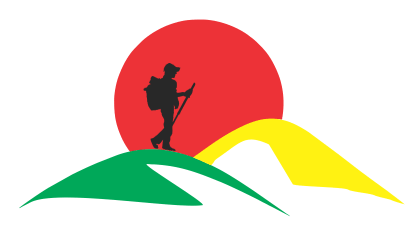Ethiopian Orthodox celebrate Timket - Epiphany on January 19 (or 20 on Leap Year), corresponding to
- Daniel Melese

- Oct 4, 2016
- 3 min read
Updated: Jan 20, 2023
Celebration of Timket festival is remarkable for the presence of large number of Orthodox Christians walking on streets, some groups singing (chanting) hymn and it is also customary to see some people on horse to add color to the festival.
Timket eve is called ‘Ketera’. On this day ‘tabot’, which is a representation of the Arc of the Covenant is carried by priests to ‘bahire Timket’, which is Timket water. This is to mark the way Jesus Christ went to the Baptist John to be baptized by him. The keys here are: the ‘tabot’ represent Jesus and go to ‘bahire Timket’ and the priests carrying tabot are for John the Baptist. The people attending the event, the priests and the youngsters singing the hymn represent the people who were baptized by John the Baptist.
The ‘tabot’, the priests and some Christians spend the night at the ‘bahire Timket’. A religious ceremony takes place the whole night. The next morning is ‘Timket’ or Ethiopian Epiphany.
Early in the morning starting from 7:00 to 9:00 baptism will take place by sprinkling blessed water from the ‘bahire Timket’ on to the believers who are gathered at the place to share this religious festival and share the blessing of ‘Timket’.
Let’s get to the history of Timket in Ethiopia. When did taking the ‘tabot’ to ‘bahire Timket’ start in Ethiopia? It starts from the reign of Emperor Gebre Meskel.
According to documents written by church intellectuals, Mefkere Haymanot Emperor Gebre Meskel, who ruled from 515 to 529 EC(Ethiopian Calendar) for 14 years used to take the ‘tabot’ to a river and return them to church the same day. He started this based on chants of Holly Yared.
The holly and wise king Lalibela reigned from 1147 to 1187 EC for 44 years. It is widely stated in history that he passed an order to churches so that those churches in the same town, village or kebele to take the ‘tabot’ to a nearby ‘bahire Timket’ for the churches. At the same time, the Egyptian holy Abune Gebre Menfes Kidus with the help of Holy Spirit, he blessed the ‘bahire Timket’ in Axum, Gondar, and Merto Lemariam in Ankober.
It is based on this declaration from King Lalibela that currently 44 ‘tabot’ in Gondar go to the closest ‘bahire Timket’. It is similarly observed in Mekele and Axum as well. Tabots in Addis Ababa used to gather at the root of Mt. Entoto until it was changed to be held at ‘Jan Meda’ at the time of Emperer Menilik II.
Something new was introduced during the reign of Emperer Yekuno Amlake from 1253 to 1268 EC. Based on order from the holy Abune Tekle Haymanot, king Yekuno Amlake introduced a new way to further honor ‘tabot’ by extending the length of the festival. Then believers started spending the whole day at the ‘bahire Timket’ with much care and honor from people attending the festival.
Another trend was added by Emperor Zereakob, who is known for his skills as an author as well. He reigned from 1456-1480. He introduced new custom to the Timket celebration by declaring that ‘tabot’ shall be at the ‘bahire Timket’ on Timket eve and spend the night there in tent prepared for the event. He also ordered, ‘tabot’ shall take a different road when they return to their home churches. That is to make all the roads ‘tabot’ are taken on become part of the blessing. This custom has been passing from generation to generation and it is still praised in Timket festival.
Following the same trend as Emperor Zereakob, Emperor Naoed who reigned from 1487 to 1500 also added to the custom by declaring all Orthodox Christians to attend the festival celebrate the cause and share the blessing. This is one of the customs of Timket to see a large crowd attending the festival.
As part of this ‘Timket’ festival, when priests carry the tabot to the ‘bahire Timket’ and when they return to churches on the next day they are busy performing religious duties. The priests fast the whole time they carry a ‘tabot’ at the same time, they pray for the churches, pray for the people and also for peace and love to be bestowed upon Ethiopia and the rest of the world.
The historical background of Timket is also physically recovered from the ruminants of materials and structures, which were used at Timket by the kings. For example, Queen Sheba’s path in Axum, Emperer David’s baptismal pool, King Lalibela’s swimming pool, Emperor Fasilides’s swimming pool which still used for Timket baptismal in Gondar.
Source: Translated and adapted from Semea Tewahido, Special Edition of Semea Tsidik




Comments